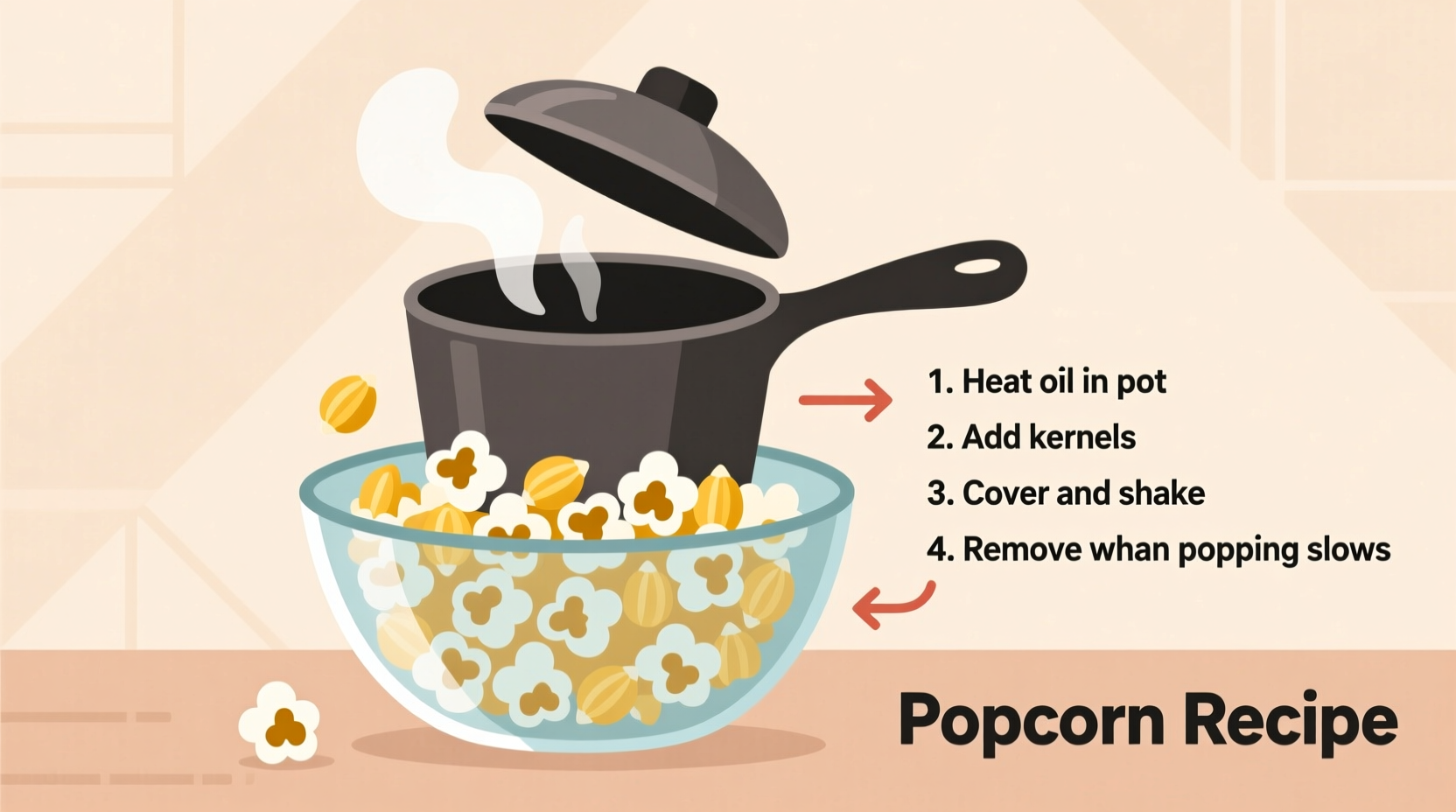The Science Behind Perfect Popcorn Every Time
Understanding why popcorn kernels pop reveals the secret to consistent results. Each kernel contains 13-14% moisture trapped inside a hard starch shell. When heated to 356°F (180°C), this moisture turns to steam, building pressure until the hull ruptures with a satisfying pop. Food scientists at the University of Nebraska confirm that kernels with optimal moisture content achieve 95%+ popping rates when heated properly.

Equipment Comparison: Finding Your Perfect Method
| Method | Success Rate | Time Required | Best For |
|---|---|---|---|
| Stovetop (heavy pot) | 95%+ | 3-5 minutes | Most consistent results |
| Air Popper | 85-90% | 2-3 minutes | Oil-free popcorn |
| Whirley Pop | 92%+ | 4-6 minutes | Even heating, no burning |
| Standard Microwave | 70-80% | 2-3 minutes | Convenience |
Step-by-Step Stovetop Method (Most Reliable)
The stovetop method delivers superior control and consistent results. Follow these professional chef-tested steps:
- Prep your pot: Use a heavy-bottomed 3-quart pot with a tight-fitting lid. Add 2-3 tablespoons of high-smoke point oil (refined coconut, avocado, or canola)
- Test kernel check: Drop 3 kernels into the oil. When 2-3 pops occur, your oil has reached the ideal 356°F (180°C) temperature
- Add kernels: Pour 1/3 cup popcorn kernels in a single layer. Cover immediately with lid
- Shake technique: Hold lid securely and gently shake pot back and forth over medium heat. This prevents burning and ensures even heating
- Listen for completion: When popping slows to 2-3 seconds between pops, remove from heat (typically 3-5 minutes)
- Rest and season: Let sit covered for 30 seconds, then transfer to bowl before adding seasonings
Avoid These Common Popcorn Failures
Food safety experts at the USDA note that improper heating causes most popcorn failures. Watch for these critical mistakes:
- Burning: Caused by excessive heat or inadequate shaking. Maintain medium heat and constant motion
- Unpopped kernels: Results from uneven heating or old kernels. Test with the 3-kernel method before adding full batch
- Soggy popcorn: Occurs when steam can't escape. Always use a vented lid or leave a small gap
- Oil smoke point exceeded: Different oils have varying smoke points. Refined coconut oil (450°F) works better than olive oil (375°F) for popcorn
Pro Tips for Restaurant-Quality Results
Professional chefs use these techniques to achieve perfect texture and flavor distribution:
- Kernel selection: Choose mushroom-type kernels for even popping. Avoid old or dried-out kernels that won't pop properly
- Temperature control: Maintain consistent 356°F (180°C) - too low prevents popping, too high burns kernels
- Seasoning timing: Add salt and seasonings immediately after popping while popcorn is still slightly damp for better adhesion
- Flavor infusion: Melt butter in the empty pot after popping, then pour over popcorn for even coating without sogginess
Historical Evolution of Popcorn Preparation
Popcorn preparation has evolved significantly over centuries. Archaeological evidence shows Native Americans were popping corn 5,600 years ago using heated sand or hot rocks. By the 1880s, street vendors used coal-powered poppers. The first patent for a stove-top popcorn popper was filed in 1885. Modern microwave popcorn emerged in the 1980s, though food historians note it typically yields 15-25% fewer popped kernels compared to traditional stovetop methods.
Frequently Asked Questions
How much popcorn does 1/3 cup of kernels make?
One-third cup of popcorn kernels typically yields 8-10 cups of popped popcorn. This ratio holds true across most kernel varieties when popped properly at the correct temperature.
Why do some popcorn kernels not pop?
Unpopped kernels ("old maids") occur when moisture content falls below 13% or heating is uneven. Store kernels in an airtight container and always use the 3-kernel test to ensure proper oil temperature before adding the full batch.
What's the best oil for popping corn?
Refined coconut oil (smoke point 450°F) is preferred by professionals for its neutral flavor and high smoke point. Avocado oil (520°F) and canola oil (400°F) are excellent alternatives that won't burn at the required 356°F popping temperature.
Can I pop popcorn without oil?
Yes, but results differ. Air poppers use hot air instead of oil, yielding drier popcorn with about 10-15% more unpopped kernels. For stovetop oil-free popping, use a splash of water with a tight-fitting lid, though this method requires careful temperature monitoring to prevent burning.











 浙公网安备
33010002000092号
浙公网安备
33010002000092号 浙B2-20120091-4
浙B2-20120091-4